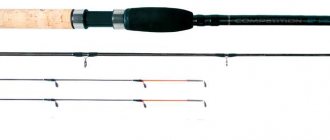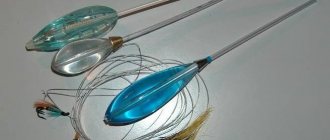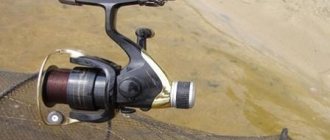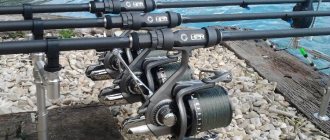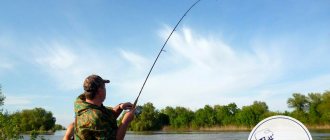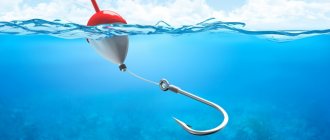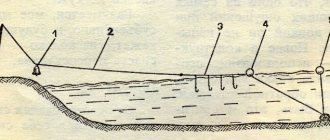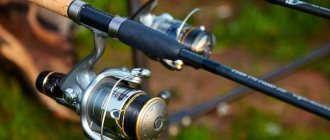Picker rod
Picker rods are sticks with a small dough, in size not exceeding 3 meters and, as already mentioned, for fishing at distances of no more than 30 meters.
The “golden” standard is fishing rods 2.4 - 2.7 meters long with 40 grams of dough, which allows you to comfortably fish in almost any body of water.
Despite the fact that you can often find telescopic fishing rods in stores, I advise beginners to abandon them and look at rods that have plug connections.
The forms consist of 2 legs and one or more tips (quivertypes) included in the kit.
Since picker fishing is an active way to relax, you should definitely choose coal blanks. Lightweight and durable.
The tops can be “coal” and “glass”. The second option is closer to me. They are softer, more elastic and more sensitive to bite.
The picker's action ranges from slow to ultra-fast. For a beginner, I would recommend choosing a rod with a fast action. It makes casting easy and catching both small and large fish.
Picker selection
Among rods designed for bottom fishing, the picker, which differs from the feeder in its increased sensitivity and compactness, takes pride of place. A picker rod is suitable for fishing from the shore in a small body of water where long casting is not required. Picker has proven itself well in hunting roach, white bream, silver bream, bleak, and crucian carp.
Such a rod with the appropriate equipment will come to the aid of the fisherman in cases where casting feeder gear is too complicated by environmental conditions. Also, a picker is also a good alternative to a match-type float rod.
When choosing a picker rod, you need to understand that the picker is suitable for fishing with small loads (up to 50 grams) at a short distance from the shore. The picker is especially good for small fish, as it is very sensitive and perfectly transmits bites from even the smallest fish.
For more information about length, test, action, tips and other aspects of choosing pickers, read the article “How to choose a picker.” Also in the article you will find an interesting video review of an inexpensive picker rod from SALMO.
Coil
Everything is simple here. The picker reel is selected individually for the fishing rod. The selection criterion is the balance between rod and reel. The optimal size would be an inertia-free machine with a size of 1000 - 2000.
I'm sure you know how to check your balance. Having secured the reel in the reel seat, place the rod on your palm turned perpendicular to the floor with your fingers closed. If the set is balanced, it will lie parallel to the floor without overweight.
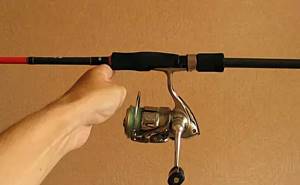
Where to fish for pickerel in the fall?
Pickers are caught in creeks, lakes and small channels. Where the current is minimal and deep areas are located close to the shore. It is often possible to catch good bream in the area of the coastal dump. There he still feeds by inertia, especially since in early and mid-autumn the food supply is still quite rich. If the depth in this place is 3-4 meters, then you can safely fish with a pickerel. The fishing distance can be 10 or 15 meters. Of course, you can fish in such a situation with a fishing rod. It makes little noise after casting. However, in autumn the direction and strength of the wind often changes. It is not always comfortable to make accurate casts in such conditions.
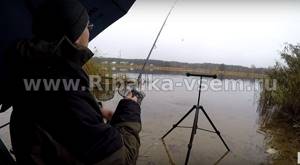
We determine where the algae ends on the bottom and try to fish at the bottom of the coastal dump. The main thing is to make quiet casts and add bloodworms, maggots and chopped worms to the bait.
Good places for fishing with pickerels are stretches. If they are located close to the shore and the depth is at least 3 meters, then you can fish. The bottom in the area of the reaches is usually as flat as a table. We look for a shell or a border between sandy and muddy bottoms at the bottom and feed the point.

When choosing a location, it is necessary to take into account the availability of food supply in the autumn. Moreover, you need to understand how the situation changes with cold weather. In September, if it is warm, almost all summer points are open. Roach will still be caught near the reeds or in the thin water near the edge. Morning and evening will still be the most productive. Only with a shift of a couple of hours.
In October, temperatures can vary greatly. If the month is more or less warm, with Indian summer, then it will be very comfortable to fish on dumps and on the stream, where there is still a lot of food. Fishing usually lasts at this time throughout the daylight hours. On sunny days the bite is usually better.
fishing line
Under certain conditions, every angler prefers braided cord or monofilament line. Optimal for the main line is a monofilament with a diameter of 0.16 - 0.2 mm.
Fishing is carried out at short distances with minimal loads. Small fish are not a problem for a monk, and the stretchability of the fishing line and the adjustment of the entire set will allow you to bring a solid trophy to the shore.
For leashes, we use scaffolding 0.12 - 0.14 millimeters long. Naturally, high-quality.
A thin braided cord, as a basis, is used in difficult conditions of an overgrown reservoir.
Features of catching crucian carp with pickerel
Fishing for crucian carp with pickerel has an extensive list of its advantages. Carrying out fishing processes with the help of these gears makes it possible to carry out fishing under almost any conditions, regardless of the vagaries of the weather, regardless of the inaccessibility of the place where crucian carp is caught, and therefore the success of this fishing gives positive results, thanks precisely to the fact that it is possible to fish where crucian carp is not feels feelings of anxiety and danger.
This equipment is perfect for fishing in reservoirs with any type of current; you can use this equipment when fishing in strong winds, while other equipment does not allow fishing in heavy winds.

With the help of picker types of equipment, catching crucian carp is greatly facilitated, because quite precise processes of throwing bait can be carried out, especially if catching crucian carp with a picker is carried out in a small area of clean water in the middle of dense thickets of aquatic grass.
When fishing with this picker rig, the catch includes much more often crucian carp that are medium in size. Therefore, it is the picker fishing rod that is significantly superior to a conventional float fishing rod in terms of its catch results.
Picker equipment is especially useful when catching crucian carp, and not only it, in conditions of high content of a wide variety of vegetation in the reservoir itself where crucian carp are caught. This equipment allows you to carry out absolutely unimpeded processes for catching crucian carp from the densest thickets of aquatic vegetation.
Picker feeder
There is an opinion among anglers that when fishing with pickerel, feeders are used only on the first casts, when it is necessary to feed the fishing point, and then a sinker is attached instead.
It is quite possible that in some conditions (on a stagnant body of water with overgrown vegetation) this will be true. But then, what’s stopping you from simply feeding the area with bait balls by hand or with a slingshot?
In my opinion, the feeder is as integral a part of the picker as its older brother, the feeder. Only here it is especially worth monitoring such parameters as weight, size and shape. Especially when fishing in the current. Not only the ballistic ability, but also the “resistance” to drift and fixation on the bottom will depend on the weight and shape of the feeder.
The most popular are feeders and weights weighing 20 - 25 grams of a cylindrical shape, made independently or factory-made. Metal or plastic.
Plastic containers are preferable.
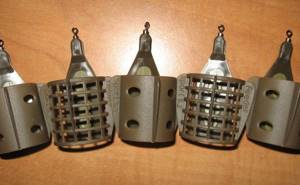
When choosing a feeder and load, it is necessary to consider the fishing conditions - the depth of the point, the current or its absence. So does the type of intended prey. Fish have an ambiguous attitude towards objects splashing and sinking to the bottom, even if they carry food.
When fishing with pickerel, delicacy and minimal noise are the key to success.
Picker device
The picker fishing rod consists of the same elements as the feeder:
- rod;
- coil;
- main line;
- feeder (or sinker);
- leash;
- hook.
Typically, rods with a length of 2 to 3 m . Blanks are most often used with two-knees with a plug-in connection of the knees, with a test weight of up to 50 g. The rod comes with several interchangeable tips (quivertips) of varying hardness, which serve as bite alarms.
High-quality picker rods are made of high-modulus graphite. This form is light and elegant, and at the same time it can withstand landing a good carp.
Unlike feeders, which have long handles that allow long casts with two hands, picker blanks are often available with short handles. Such rods are most convenient for active fishing at short distances.
Picker has a number of advantages over other gear, which make it almost ideal gear for crucian carp fishing.
Advantages of a picker over a float rod:
- long-distance casting : a compact weight or picker feeder hardly floats when casting, which allows you to make precise casts over a distance of several tens of meters;
- the ability to fish in windy weather : even in a squally wind, you can make a good cast with a picker, and the tip of the rod will clearly show the bite, while there is nothing to do with a float in such weather on a pond;
- Convenience of feeding : the picker allows precise feeding of the selected fishing area, keeping the fish in one place.
Advantages of a picker over a feeder:
- compactness : pickers are convenient to use in places where casting with long rods is difficult (for example, if fishing is done from the shore covered with dense vegetation), on small ponds, channels and bays;
- lightness : crucian carp, especially large ones and when caught at relatively shallow depths, can be alarmed by the impact of a heavy feeder on the water, while a pickerel makes less noise when casting and is well suited for catching trophy specimens;
- sensitivity : the picker is good at showing cautious crucian bites; in addition, this tackle allows you to use the thinnest fishing lines and light, elegant equipment that will not scare off capricious fish.
A picker differs from a regular donkey in that it allows you to use a feeder instead of a sinker, thereby improving fishing performance, and involves more active, high-speed fishing.
Hooks
The main trophies are sorog, dace, crucian carp and bream. Taking this into account, the leading hooks are No. 10 - 16. If plant baits are used, hooks with a wide round bend are used. For animal baits - with an extended fore-end.
There are special hooks for the feeder on sale. They are made from thicker and stronger wire.
By and large, there is not much difference in what the hook is made for. The main thing to check when purchasing is the sharpness of the sting. You can check the sharpness by running a sting along your nail. The sharp hook leaves scratches with light pressure.
Selection of components and equipment
Vershinka . The colored tip is an important element of picker tackle, since it is the tip that acts as a bite indicator. On stagnant bodies of water, soft plastic quivertips are optimal, and hard coal ones are better suited for rivers, but crucian carp, as you know, usually stick to calm water.
Every fisherman should have a set of tips of different softness in his arsenal - usually it comes complete with a picker rod, but you can purchase quivertips separately.
Reel _ A spinning reel is ideal for picker fishing. It should be small and harmoniously combined with the fishing rod ( sizes 1500 - 2500 ). The friction brake can be adjusted at the rear or at the front, depending on the angler’s personal preferences. If
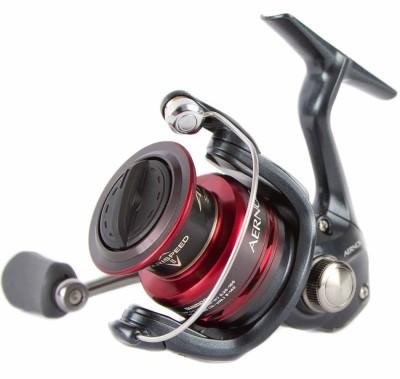
It is intended to fish with braid, the spool collar and the line roller must have a coating that can withstand the friction of the fishing line.
For picker fishing, you can use either a lightweight feeder reel with a baitrunner ( SHIMANO BAITRUNNER ST FB 2500, SHIMANO BAITRUNNER ST FA 2500 ) or a regular spinning reel with a rear drag ( Shimano Alivio 2500 RC ).
Fishermen also often use match reels for catching crucian carp, such as Mikado Ace Match 2006 FD . They lay thin line well and have a large gear ratio, which allows you to quickly reel in the gear (this is an important point in active picker fishing).
Fishing line . When catching this fish with pickerel, monofilament is often used. It is cheaper than braid and at the same time allows you to effectively catch fish at a short distance in the coastal zone, where pickerel fishing usually takes place. For catching crucian carp, monofilament with a thickness of 0.12 - 0.18 mm .
If you plan to make long casts, using monofilament, which stretches greatly, will noticeably reduce the sensitivity of the tackle and will make it difficult to control it. In this case, it is better to use braided wire.
Also, braided fishing line will be the best choice for fishing in heavily overgrown reservoirs , where many snags usually occur, since it has maximum strength with minimal thickness. For catching crucian carp with pickerel, a braid of 0.08 - 0.1 mm is suitable.

Feeder . In picker fishing, light spiral feeders weighing up to 15 - 20 g are used. The feeder must be selected so that, taking into account the weight of the bait, its weight does not exceed the upper limit of the rod test.
Since fishing usually takes place over a short distance, and picker feeders are small and have a small capacity, they are often not used at all. In this case, equipment with a sinker is used , and the point is fed with balls from the hand or using a slingshot.
Leash . For crucian carp fishing, which usually takes place in stagnant reservoirs, leashes up to 50 cm long are used. They can be made from braided wire, but to avoid frequent tangling of the leash over the fishing line during casting, it is better to use monofilament, which is more rigid.
Hooks . For catching crucian carp with pickerel, feeder hooks are best suited. If you use vegetable baits or small maggots, it is better to take so-called carp baits (with a short shank), and for fishing with a worm or a large sandwich with bloodworms and maggots , hooks with a long shank. The optimal size of hooks is selected taking into account the size of the intended trophies; numbers from 6 to 18 are usually used.
Equipment . The following can be considered an excellent picker rig for crucian carp:
- symmetrical loop;
- asymmetrical loop;
- Gardner's loop (paternoster).
Equipment using a symmetrical and asymmetrical loop quickly responds to a bite and does not sink in the silt, which makes catching crucian carp with them comfortable and effective. The Gardner loop provides excellent sensitivity and allows you to not miss even the most careful bite of this capricious fish.
You need to remember about complementary feeding , let's talk about this in more detail.
Fishing places . Before you start fishing, you need to start feeding the point, after which you can wait some time and start fishing, during which you should regularly feed the point with small portions of bait for crucian carp.
There are three ways to deliver food to the fishing point for pickerel fishing:
- using a feeder;
- throwing balls from your hand;
- using a slingshot.
Using a feeder . For starter feeding, you can use a special high-capacity feeder. After splashing down, you need to let the line sag, after which you should make a sharp jerk with the rod so that the food spills out to the bottom, and start reeling.
After a series of casts to start feeding the point, you can set up a working feeder, which will be used during fishing, and start fishing, each time after reeling out the tackle, filling the feeder with a new portion of bait.
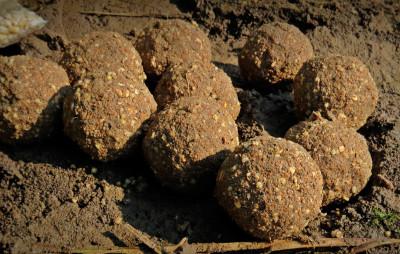
Balls from your hand . It is necessary to form dense balls of about 10 - 12 cm in diameter from the soaked bait. The ability to accurately cast them comes with practice.
It is better to throw the throw not from behind the head, but from the bottom up - this will allow you to place the balls more softly and avoid their premature destruction.
Slingshot . To cast with a slingshot, the bait must be rolled into balls with a diameter of about 5 cm. Each such ball is placed in the thicket of the slingshot, after which a shot is fired in the desired direction. The ability to place bait exactly in the fishing spot, again, comes with practice.
As for the composition of the mixture , you can purchase ready-made feeder bait in the store or make it yourself. Crucian carp are well attracted to ordinary porridges flavored with flavors - vanilla, honey, strawberries, dill, garlic and others.
Equipment for picker - Gardner paternoster and Inline
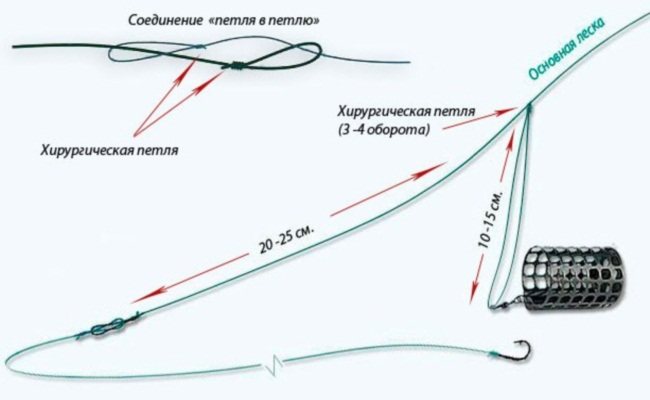
The main feature of the Gardner paternoster is its simplicity and reliability.
Offering to watch the installation of equipment is always better than forcing you to read. Therefore, I suggest that you watch the video with all the stages of manufacturing the Gardner paternoster and the In-Line feeder equipment.
The only moment. When describing the Carrot knot, the cone of the knot needs to be knitted in the opposite direction.
And in conclusion, an interesting video from a professional pickerel fisherman describing the main points of fishing.
NHNCH. Sergey K. Krasnoyarsk
Opinions between amateurs and professionals often differ. This is what feeder fishing pro Normunds Grabovskis said on the pages of salmoru:
How does the picker itself work?
The design of picker equipment for crucian carp is quite simple, and is a feeder equipment, which belongs to the light class, and is used for bottom-catch fishing for smaller species of fish from short distances.
Let's look at the design of a picker rod:
- - the rod itself;
- - a coil is required;
- - fishing line;
- — you can use feeders instead of sinkers;
- - leash;
- - and, of course, the hook itself.
Compared to feeders, which equip the rods with longer handles, picker rods themselves are produced with shorter versions of their handles, which is why catching crucian carp with a picker is more comfortable over short sections of the fishing length.
When using picker equipment, the process of throwing the feeder is carried out in a better way, and the casting itself becomes more accurate. In addition, anglers can carry out the process of fishing for crucian carp with a pickerel even in strong winds. The use of this rod ensures fairly accurate implementation of the processes of feeding crucian carp in the pond.
Features of autumn fishing
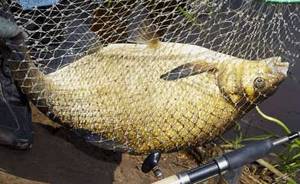
From mid-September until late autumn, the most reliable places for me in terms of fishing with an English bottom rod are shallow river basins bordering river holes. Bream, silver bream and white-eye feed here until late autumn. These fish are schooling fish, and if they go out to feed, the bite is guaranteed to be excellent. And the fishing pressure in these places is minimal. With incomprehensible stubbornness, until late autumn, many anglers continue to fish dumps along river bends, although bream appears here less and less in the fall.
Since the current in river irrigation is not strong and the depth is shallow, a pickerel may be a very good choice. At first glance, this tackle seems too elegant for a large river. Of course, the picker is not designed for ultra-long casts, and you won’t be able to force catch large fish with it. However, the picker has such advantages that one can only dream of with a heavy feeder. One of them is the ability to work in confined spaces. In fact, bushes hanging over the water and thick grass behind the angler are a serious obstacle to the feeder. And with the help of a short picker, with a wave from under your hand, you can easily throw the feeder at a distance of 15 m from you. So for catching bream in the fall in hard-to-reach (and therefore rarely visited by other fishermen) places, pickerel is the most convenient tackle.
Read! Tips for catching carp on a feeder
Another advantage of the picker is the ability to work with small, sometimes thimble-sized, wire feeders. With their help, you can deliver only tiny portions of food to the fish, which is a very good solution for the autumn season. When the water is cold or the weather changes suddenly, the fish's appetite becomes sluggish and it is very easy to overfeed them.
But sometimes even such a small feeder turns out to be too noisy for the fish. And in order not to scare away a feeding bream from the shore, instead I put a small flat sinker weighing 10-30 g. This technique works especially well in cases where feeding can be done by hand. At the beginning of fishing, when there is plenty of food on the bottom, and the fish have not yet tasted the treat and are cautious, the noise from the feeder falling into the water can scare away the school. Unlike a feeder, the sinker does not need to be rethrown every 3-5 minutes. Then, when the fish tastes the food, the feeder works better than the sinker. Regular supplementary feeding with tiny portions of bait further whets her appetite.
In order not to overfeed capricious autumn fish, it is better to use very small feeders.
Any reel will do, but no more than 2500 according to the Shimano classification. The main thing is that the friction brake works softly, because during autumn fishing you often have to work in the dark with thin fishing lines.
As the main line, I always use monofilament line no thicker than 0.16 mm. Its tensile strength goes well with the power of a picker rod. If you use a thicker line, your casting distance will noticeably decrease. And the risk of breaking the quivertype greatly increases when the equipment is released while it is hooked on the bottom. For leashes when fishing for bream with pickerel in the fall, I always choose high-quality, preferably fluorocarbon, fishing line with a diameter of 0.1-0.14 mm. The power of modern fishing lines of this diameter is quite enough to easily bring to the surface a fish weighing up to 2 kg. The main requirement for picker hooks is impeccable sharpness of the sting. All other qualities - size, hook shape and wire thickness - are selected based on the angler’s personal preferences, the size of the bait and fishing conditions. It is pointless to give any specific advice on choosing a particular model. Each angler can list several models of hooks that he likes. In my arsenal for autumn pickerel fishing there are hooks No. 10-18. So, if the fish is very capricious and the size of the bait matters to it, I put one or two maggots on hook No. 18. If the bite is good and bream comes up for bait, then I use a red dung worm attached to hook No. 10 as bait.
Read! Killer tackle for crucian carp
I prefer to tie rigs for catching bream with pickerel directly on the pond and do not make any home preparations. For many years now I have been using two mounting schemes: a symmetrical loop about 50 cm long and a rig with a sliding sinker, which I simply put on the main fishing line and secure from below through a bead with a swivel. I tie a leash to the swivel. Its length depends on the activity of the fish and ranges from 0.3-1 m. Usually I start fishing with the longest leash, and then, if the fish is active, I gradually shorten it. In the fall, a very useful part of the rig is a fluorocarbon shock leader 5-6 m long. It is especially good in the second half of autumn, when the water becomes especially clear.
